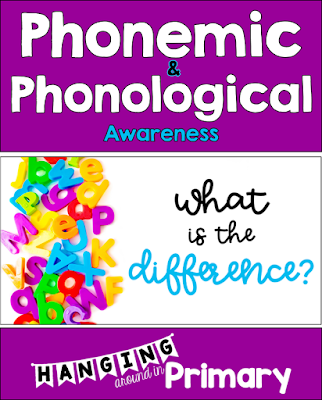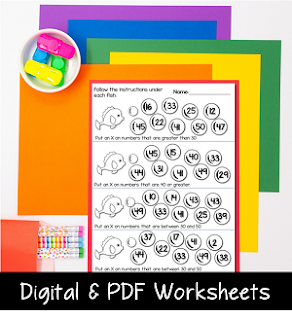Teachers often confuse phonological and phonemic awareness, and rightly so. They are so intertwined that it is difficult to determine which skills fall under which term. I hope to clarify some confusion about these two terms and help you better understand the difference between phonemic and phonological awareness.
Phonological awareness is an umbrella term that encompasses phonemic awareness.
However, you will most often hear the term phonemic awareness, which is often used to refer to all the skills that are part of phonemic and phonological awareness.
To avoid confusion and follow the common practice, I will also refer to these skills as phonemic awareness. However, let's consider what distinguishes one from the other first.
What is Phonemic Awareness?
It is the ability to hear and manipulate the sounds or phonemes in spoken words. It is also the understanding that spoken words and syllables are made up of sequences of speech sounds.
All words are a series of phonemes blended together. Phonemic awareness does not involve print; it is an auditory skill. For instance, a child without phonemic awareness may not hear that sun and sit both start with the same sound. They may not blend together sounds into words like mmmm... aaaaa... nnnn is man.
What is Phonological Awareness?
It encompasses the many ways sounds/phonemes function in words. It goes beyond just the phoneme level and delves into syllable, rhyme, and onset/rime.
For instance, a child without phonological awareness would have difficulty with the following skills: counting the syllables in cup-cake, creating rhyming words for sing or recognizing the onset and rime in c-ake.
To keep all the skills straight in my head, I keep a quick reference sheet handy. You can download it for free by clicking on the image.
How is Phonemic Awareness different than Phonological Awareness?
Phonemic awareness is all about phonemes - the sounds in spoken language and how we manipulate them to make words. It involves isolating phonemes - the first sound in cat is /c/ and manipulating phonemes: for example, changing the /c/ to /b/ in cat to get bat.
Phonological awareness expands that skill beyond just the phoneme to include explicit teaching around onset/rime: c-at, syllables: cat has 1 syllable, and rhyming: cat, mat, bat, hat...
When should I teach Phonemic Awareness?
Phonemic awareness is a precursor to reading. Children must be able to hear the phonemes (or sounds) in spoken language.
Ideally, children coming from kindergarten will have had lots of phonemic awareness instruction and have solid phonemic awareness skills.
However, we all know that children progress at different rates in their learning. For this reason, as a first-grade teacher, you should be prepared to teach phonemic awareness right from the start of the school year.
Second and third-grade teachers who have students who are struggling to read should also assess their students' phonemic awareness to see if there are still gaps holding them back.
How do I know where to start?
Using a screener is an effective way to identify where your students are at with their phonemic awareness development.
Screening your students takes time, but it is well spent to inform your individualized and whole group instruction.
Perhaps you are ready to dive in and start working on phonemic awareness. Since it's an oral skill, you only need words to get started. Check out this set of over 215 word lists. You will have exactly what you need to start your phonemic awareness program! Click the image below to check out the resource.


















.png)









No comments